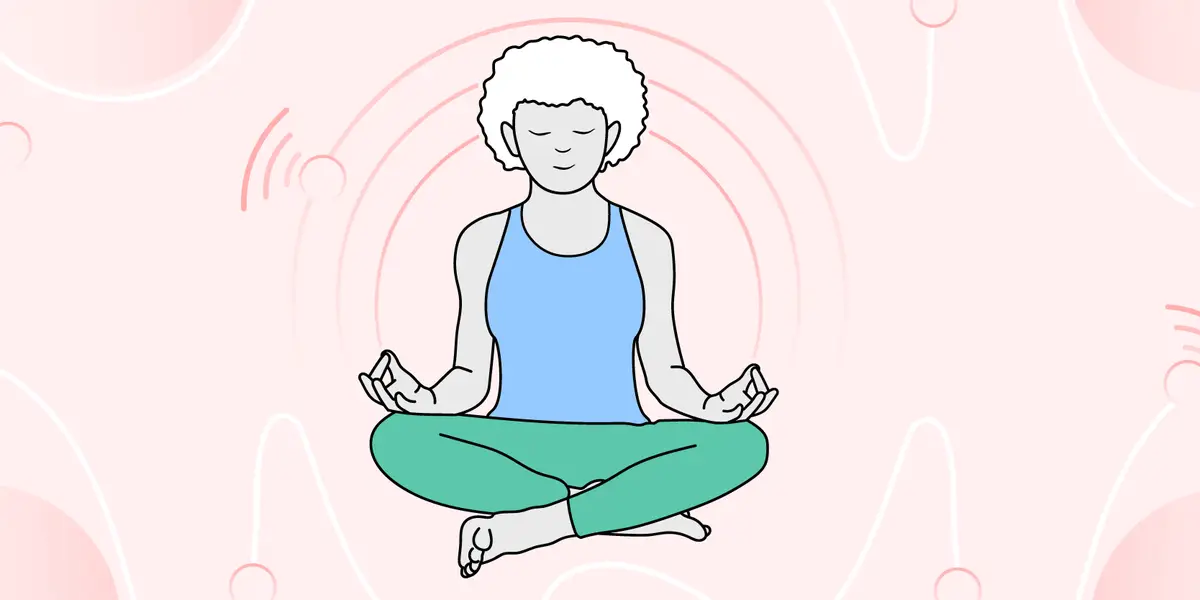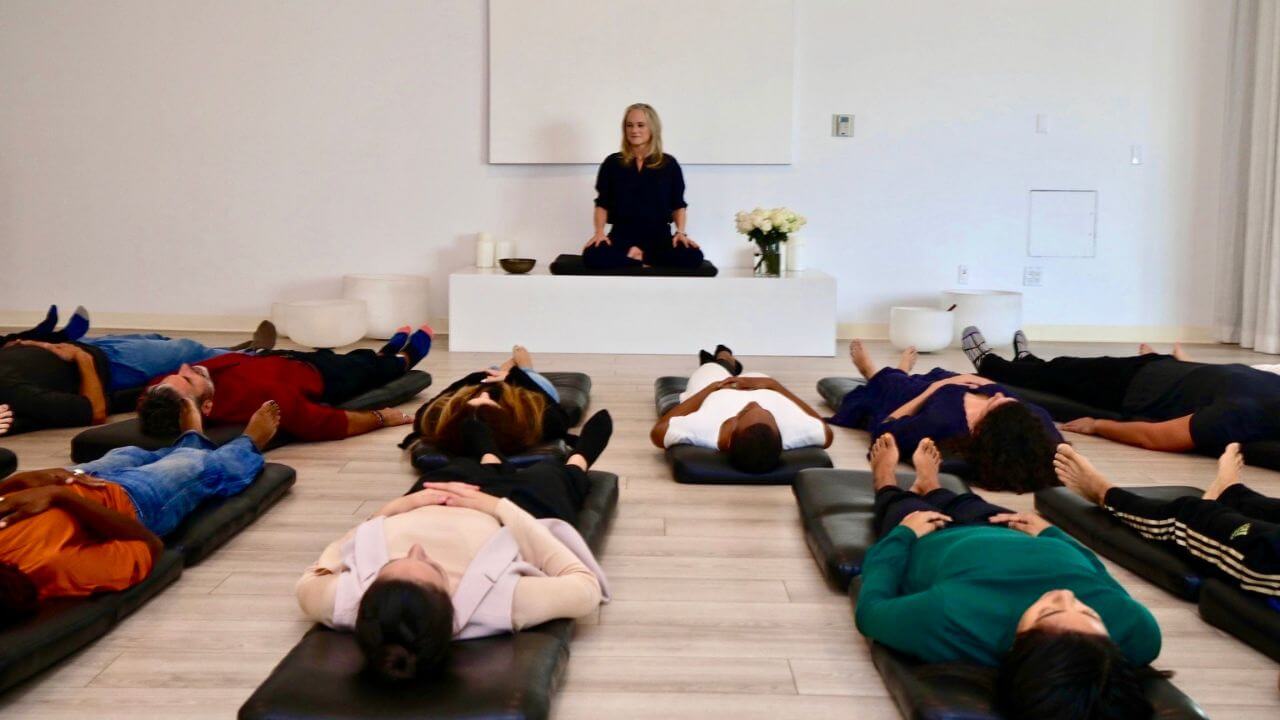
Anxiety attacks can be overwhelming and debilitating, but there's a powerful tool that can help you regain control over your mind and body: meditation. In this article, we'll explore how meditation for anxiety attackscan be a valuable practice for managing anxiety attacks and provide you with a step-by-step guide to get started.
Understanding Anxiety Attacks
Anxiety attacks, also commonly referred to as panic attacks, are sudden and intense episodes of overwhelming fear and anxiety. These episodes can be profoundly distressing and often come on suddenly, seemingly out of nowhere. Understanding the key characteristics and triggers of anxiety attacks is essential for effectively managing them.
Key Characteristics Of Anxiety Attacks
- Intense Fear and Anxiety: During an anxiety attack, individuals experience an overwhelming and irrational sense of fear. This fear can be all-encompassing and may lead to a feeling of impending doom.
- Physical Symptoms: Anxiety attacks often present with a range of physical symptoms, which can include a racing heart (palpitations), shortness of breath, trembling or shaking, sweating, chest pain or discomfort, dizziness or lightheadedness, and a feeling of choking. These physical sensations can mimic those of a heart attack, making the experience even more frightening.
- Feeling Out of Control: People who experience anxiety attacks frequently describe a sense of losing control or going "crazy." The intense fear can make it challenging to focus on anything else.
Common Triggers
Anxiety attacks can be triggered by a variety of factors, including:
- Stress: High levels of stress, whether related to work, relationships, or personal life, can trigger anxiety attacks.
- Phobias: Specific phobias, such as fear of flying, heights, or confined spaces, can lead to panic attacks when confronted with the source of the phobia.
- Traumatic Events: Past traumatic experiences or even recent traumas can increase the likelihood of anxiety attacks.
- Major Life Changes: Significant life changes, such as a job loss, divorce, or moving to a new city, can be stressful and provoke anxiety attacks.
- Medical Conditions: Certain medical conditions or medications can contribute to the occurrence of anxiety attacks.
The Power Of Meditation
Meditationis a contemplative practice that has been used for centuries to achieve mental clarity, emotional balance, and a sense of inner peace. It involves training your mind to focus on the present moment, cultivating mindfulness, and reducing the impact of racing thoughts and worries. For individuals struggling with anxiety attacks, meditation can be a powerful tool for regaining control over their mental and physical states.
How Meditation Helps During Anxiety Attacks
- Calms the Mind:Anxiety attacks can be characterized by a whirlwind of racing and often irrational thoughts. Meditation teaches you to observe your thoughts without judgment and gradually quiets the mind.
- Regulates Breathing:Controlled breathing techniques are a fundamental aspect of many meditation practices. During an anxiety attack, rapid and shallow breathing often occurs, leading to feelings of suffocation and heightened panic.
- Reduces Physical Tension:Anxiety attacks can manifest with a range of physical symptoms, including muscle tension and trembling. Meditation promotes relaxation and mindfulness, which can effectively reduce muscle tension.
- Shifts Focus:Meditation redirects your focus away from anxious thoughts and towards a specific point of concentration. This can be your breath, a mantra, a visual object, or even the sensations in your body.
Getting Started With Meditation
Meditationis a skill that requires practice and dedication. It's particularly effective in managing anxiety attacks when incorporated into your daily routine. Here's a comprehensive guide on how to get started:
Find A Quiet Space
Choose a serene and quiet location where you won't be disturbed. Ideally, this space should be free from distractions, allowing you to focus entirely on your meditation practice.
Comfortable Posture
Select a comfortable posture for your meditation. You can either sit on a cushion or a chair with your back straight and your hands resting comfortably on your lap. Alternatively, you can lie down, keeping your body aligned.
Focus On Breath
Close your eyes gently and turn your attention to your breath. Begin to breathe deeply and naturally, inhaling through your nose and exhaling through your mouth.
As you breathe, focus your awareness on the sensation of your breath. Notice the rise and fall of your chest or the feeling of the air passing through your nostrils. Concentrate solely on your breath, letting go of other thoughts.
Mindfulness Meditation
- Practice mindfulness by observing your thoughts without judgment. Recognize that it's normal for your mind to wander, especially during an anxiety attack.
- When thoughts arise, let them come and go like clouds in the sky. Acknowledge them without attaching any emotional weight to them, and gently redirect your attention back to your breath.
- The goal of mindfulness meditation is not to eliminate thoughts but to become an observer of your thoughts, creating a sense of detachment from them.
Guided Meditation
- Consider utilizing guided meditation resources, such as apps or recordings designed specifically for anxiety management. These can provide you with helpful instructions and soothing guidance throughout your practice.
- Guided meditations often include prompts for relaxation, breathing exercises, and techniques to manage anxietymore effectively.
Progressive Muscle Relaxation
- Combine your meditation practice with progressive muscle relaxation. This technique involves systematically tensing and then releasing each muscle group in your body, starting from your toes and working your way up to your head.
- Progressive muscle relaxation helps reduce physical tension, which is a common component of anxiety attacks. When combined with meditation, it enhances the overall calming effect.
Practice Regularly
- Consistency is essential in reaping the full benefits of meditation. Aim to integrate meditation into your daily routine, even on days when you're not experiencing anxiety attacks.
- Regular practice builds resilience and equips you with effective tools for managing anxiety. Over time, you'll notice an improvement in your ability to remain calm and centered during challenging moments.
Breathing Techniques
This might seem obvious, but as anyone trapped in the throes of an anxiety attack knows, breathing isn't always easy in that moment.
However, it's crucial to understand that focusing on your breath can be a potent tool for managing anxiety attackseffectively. Here's a more detailed breakdown of how to use your breath as a calming anchor:
- Mindful Breathing:Begin by paying full attention to each breath. Take your time with each inhalation and exhalation. Try counting slowly to help regulate your breath. Inhale deeply through your nose, counting to four, and then exhale slowly through your mouth, also counting to four. Repeat this process, ensuring that each breath is deliberate and even.
- Body Awareness:As you focus on your breath, turn your attention inward and notice the physical reactions occurring in your body. Anxiety attacks often come with physical symptoms like a racing heart, shallow breathing, and muscle tension. As you breathe mindfully, you may start to feel your heart rate slowing, your breath deepening, and your muscles relaxing.
- Quieting Intrusive Thoughts:During an anxiety attack, your mind can become a whirlwind of racing and distressing thoughts. The practice of focusing on your breath is a way to quiet these intrusive thoughts. When distracting or worrisome thoughts arise, acknowledge them without judgment, and then gently guide your attention back to the count of your breaths.
Guided Meditation For Anxiety Attacks
Guided meditations serve as valuable tools for individuals who are new to meditation or seeking support during challenging moments like panic attacks. They offer structured guidance and a soothing voice to lead you through the meditation process. Here's how guided meditations can be a lifeline, especially during panic attacks:
Navigating Meditation With Guidance
Starting a meditation practice can be daunting, and many individuals feel uncertain about whether they're doing it "right." Guided meditations provide a reassuring presence a voice that gently guides you through the process. This guidance can be especially helpful for beginners as it provides a clear structure and instructions.
Accessibility From Anywhere
The beauty of guided meditations is that they are readily accessible from the comfort of your own space. You don't need to leave your home, attend a meditation class, or have any prior experience. With a smartphone or computer, you can easily connect to a meditation app or website, plug in your headphones, and start meditating.
Tailored For Panic Attacks
In the digital age, meditation apps have evolved to cater to specific needs, including those who experience panic attacks. Many meditation apps offer guided sessions that are explicitly designed to help individuals navigate and alleviate the symptoms of panic attacks.
Immediate Support And Relief
During a panic attack, time is of the essence. Guided meditations can provide immediate support. With just a few taps on your device, you can access a guided session tailored to your needs. The calming voice and structured meditation process can serve as a lifeline, helping you regain control over your thoughts and emotions.
Building A Consistent Practice
Guided meditations can also assist in establishing a regular meditation practice. By offering a variety of guided sessions for different purposes such as stress reduction, sleep improvement, or anxiety management they encourage you to incorporate meditation into your daily routine. Consistency is key in building resilience to panic attacks.
Mantra Meditation For Heart Health
Mantra meditationholds promise for promoting heart health by mitigating stress, which is a significant risk factor for heart attacks. Here, we explore how the practice of mantra meditation can contribute to reducing stress and protecting your heart.
Stress And Heart Health
Chronic stress is known to have detrimental effects on the cardiovascular system. When stress becomes chronic, it can lead to high blood pressure, inflammation, unhealthy eating habits, and other behaviors that contribute to heart disease. Reducing stress is a crucial component of heart attack prevention.
How Mantra Meditation Can Help
Mantra meditation offers an effective approach to managing stress, which, in turn, can help protect your heart. Here's how:
- Stress Reduction:The repetitive chanting or silent repetition of a mantra induces a sense of calm and relaxation. It has been shown to reduce the production of stress hormones and lower overall stress levels.
- Lower Blood Pressure:Mantra meditation has the potential to lower blood pressure, a key factor in heart health. When stress levels are reduced, blood pressure tends to normalize.
- Improved Emotional Well-being:Regular practice of mantra meditation can enhance emotional stability. It equips individuals with tools to cope with stressful situations more effectively, reducing emotional triggers that can contribute to heart problems.
- Healthy Lifestyle Choices:Mantra meditation encourages self-awareness and mindfulness. People who practice mantra meditation often report making healthier lifestyle choices, such as adopting a balanced diet, engaging in regular physical activity, and avoiding excessive alcohol or tobacco use.
Practicing Mantra Meditation For Heart Health
To incorporate mantra meditation into your heart health routine, follow these steps:
- Select a Heart-Centered Mantra:Choose a mantra that focuses on qualities associated with heart health, such as "peace," "love," "balance," or "heart health." Alternatively, you can select a traditional mantra like "om" and infuse it with your heart-focused intention.
- Find a Quiet Space:Sit comfortably in a quiet, serene environment where you won't be disturbed.
- Breathe and Focus:Close your eyes and take a few deep breaths to center yourself. Begin to repeat your chosen mantra either silently or audibly, syncing its rhythm with your breath.
- Cultivate Mindfulness:Allow the mantra to guide your awareness, gently steering your thoughts away from stressors or distractions. If your mind wanders, acknowledge it without judgment and return to the mantra.
- Regular Practice:Consistency is key. Aim to practice mantra meditation for at least a few minutes each day, gradually increasing the duration as you become more comfortable with the practice.
Mindfulness Works, But Not For Everyone
While meditation does appear to have positive effects on mental health, it's essential to understand that it may not be more effective than other approaches you can take to improve your well-being. Early research painted a very rosy picture of the impact of mindfulness meditation on mental health, but as the body of research has grown, so too has scientific skepticism surrounding these initial claims.
For instance, a comprehensive 2014 meta-analysis, published in JAMA Internal Medicine, rigorously examined 47 randomized controlled trials of mindfulness meditation programs, involving a total of 3,515 participants. The results were somewhat surprising: meditation programs produced only small to moderate reductions in anxiety and depression.
“„In essence, practicing mindfulness is a process of learning to trust and stay with feelings of discomfort rather than trying to escape from or analyze them- Dr. Bob Stahl, health expert.
"This often leads to a remarkable shift; time and again, your feelings will show you everything you need to know about them and something you need to know for your own well-being." Read more about well written research papersabout medical science.
People Also Ask
Can Meditation Help With Anxiety Attack?
meditation can be beneficial for managing anxiety attacks. Meditation techniques, such as mindfulness meditation and deep breathing exercises, can help individuals experiencing anxiety attacks by promoting relaxation, reducing the intensity of symptoms, and calming the mind.
Meditation encourages individuals to stay present in the moment, which can be especially helpful during an anxiety attack when thoughts may feel overwhelming. However, it's essential to note that while meditation can be a valuable tool, it may not work for everyone, and individuals with severe anxiety should consult with a healthcare professional for guidance on managing their condition.
What Is The 3 3 3 Rule For Anxiety?
The 3-3-3 rule is a simple and effective grounding technique for managing anxiety or panic attacks. It involves the following steps:
- Name Three Things:Identify and name three things you can see around you. This helps anchor you in the present moment and redirects your focus away from anxious thoughts.
- Name Three Things Again:Next, name three things you can hear. Pay attention to sounds in your environment, whether it's the hum of a fan, birdsong, or traffic noise. This further grounds you in the here and now.
- Move Three Body Parts:Finally, move three parts of your body. Wiggle your toes, rotate your wrists, or gently sway your head. This physical movement helps reconnect you with your body and can alleviate the sensation of being "stuck" during an anxiety attack.
The 3-3-3 ruleis a quick and accessible technique that can be used to regain a sense of control and reduce the intensity of anxiety or panic symptoms.
Should You Meditate During A Panic Attack?
Meditating during a panic attack can be challenging, as panic attacks often involve intense feelings of fear and physical symptoms like a racing heart and shortness of breath. While some individuals find meditation techniques helpful for managing panic attacks, it may not be suitable for everyone during the acute phase of an attack.
Instead, it's generally recommended to focus on grounding techniques like the 3-3-3 rule, deep breathing exercises, or seeking immediate support from a trusted person. Once the panic attack has subsided, meditation can be beneficial for preventing future attacks and managing overall anxiety.
It's important to consult with a healthcare professional to determine the most appropriate strategies for managing panic attacks based on your individual needs and experiences.
Conclusion
Meditation is a valuable tool for managing anxiety attacks, offering a natural and effective way to regain control over your mind and body.
Remember that meditation is a skill that takes time to develop, so be patient with yourself as you embark on this journey to find inner peace. With dedication and practice, you can harness the power of meditation to reduce anxiety and lead a calmer, more balanced life.




